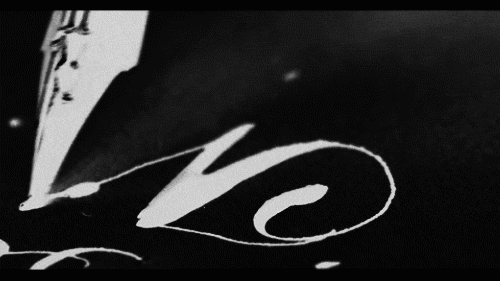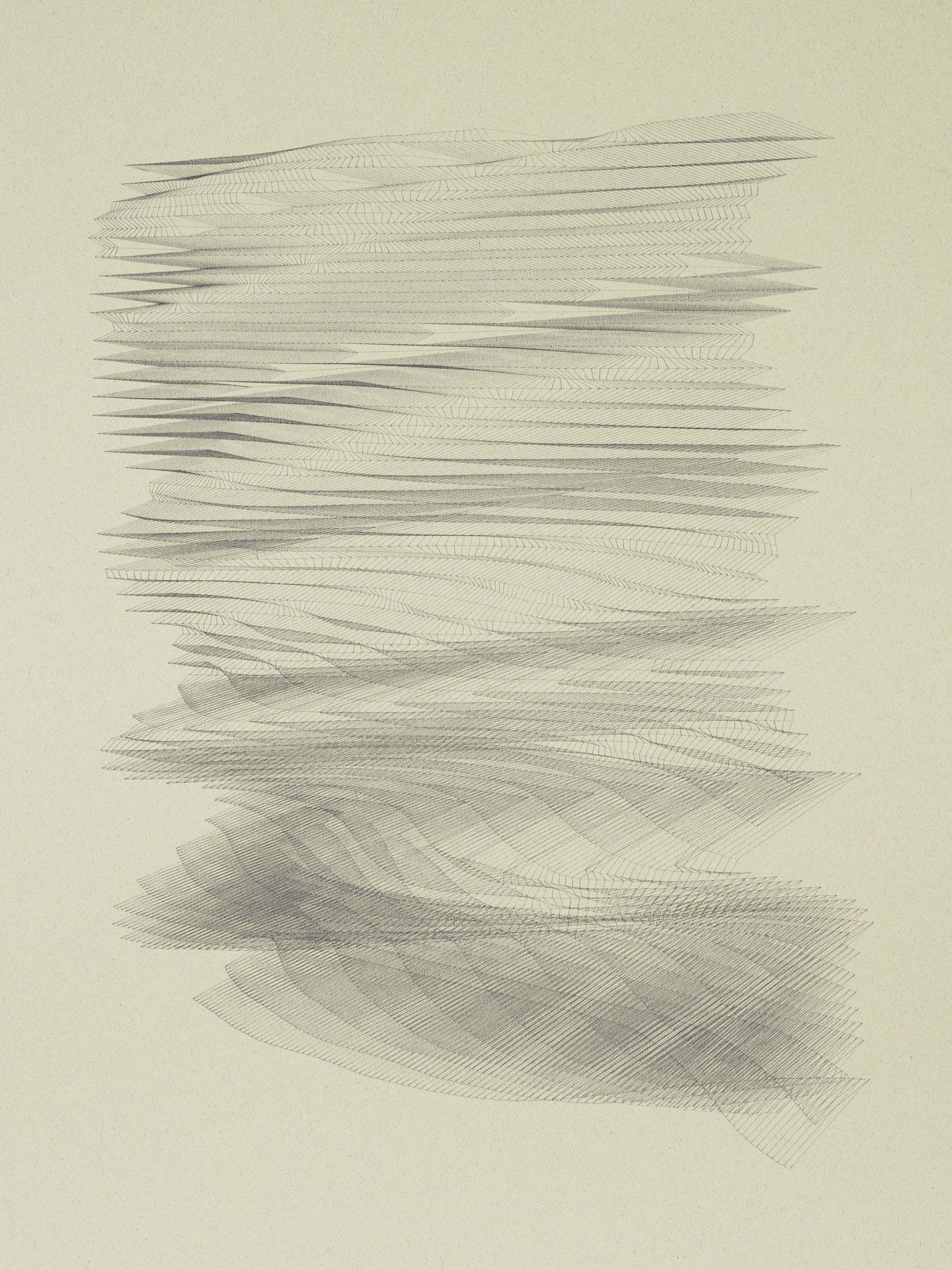PROCESS
SOUND

Step one: Sound design is an unlimited transient medium that mutates seamlessly between micro-cellular levels and gargantuan star-sized concepts. It is a persistent and critical part to my visual creations. During experimentation I extract aggregate sound waves and minute control voltages for absorption into code.
CODE

Step two: I use a node-based visual program to capture, convert, normalize, scale and algorithmically manipulate the sound and voltage data. The process is bi-directional as segments of code are feedback into the sound and recaptured. The final results are summarized for transmission to the mechanical printing process.
MACHINE

Step Three: The code is translated and replicated with a plotter. This electro-mechanical device is fed coordinates and uses servo motors to push and pull a writing instrument in finite cartesian space. Though mechanical, this process is vulnerable to failures, glitches and human error. I find this intrinsically beautiful.
MATERIALS

Paper is always archival and depending on the pen and ink combination and drawing concept the color varies. Pen and ink: Rotring Isograph - black, red, blue and white ink. Bic Crystal - black ink. Pilot Hi-Tec-C - black ink.
EDITIONS

For now all images will be printed in a limited run of 5. Each image is unique. That means the one in the series for sale will have its own printing characteristics (see plotter description above). These will always be visible before purchasing.
ON WASTE

I am very careful to test my concepts as far as possible before committing them to paper. I use pens with refillable reservoirs and I’m researching ways to reuse the ones that don’t.
![OPTICAL HOST BINDING [01] VER-A 12x16](https://freight.cargo.site/t/original/i/9065a79ec72f84d0fc78e644fbfbeb738d02d32bb26fbd2714658cb246d76c67/Temple-1-LG.jpg)
![OPTICAL HOST BINDING [02] 12x18](https://freight.cargo.site/t/original/i/aabc07555658cd7044d4831d6270252744d5284981a1141c37f7bc8b40991d7f/Temples-4-LG.jpg)
![OPTICAL HOST BINDING [01] VER-B 12x16](https://freight.cargo.site/t/original/i/7d0cd0ede276b969a84365882788fb4ce73c32bb12783512c0af1497eb41753f/Temple-2-LG.jpg)

![TWIN TRIPLET CODE - CONVOLUTION LOOP [01] 14x11](https://freight.cargo.site/t/original/i/dadfb7a8311b0d8835b5b8e085a457385ddbf053635d402d91ad8d9a468685c6/Folding-Squares-1-LG.jpg)
![TWIN TRIPLET CODE - DUST [01] 11x14](https://freight.cargo.site/t/original/i/2725a5934e499d191741d218ebe3845b3fea92717c65af4dff20be54f625eb6b/Helmet-Squares-1-LG.jpg)





![OPTICAL HOST BINDING [03] 12x18](https://freight.cargo.site/t/original/i/9d57bcf56ff654ae843e31dd6bf6c9ecd457b503beed8b7a2d67bd0209a5fc6e/Temple-3-LG.jpg)


![TWIN TRIPLET CODE - SIGNAL DISRUPTION [01] 14x11](https://freight.cargo.site/t/original/i/68b130458f58f00016623b5eb0a6acd2d27324ad8076f0d5afdae4db4af6051c/Flower-Squares-1-LG.jpg)



